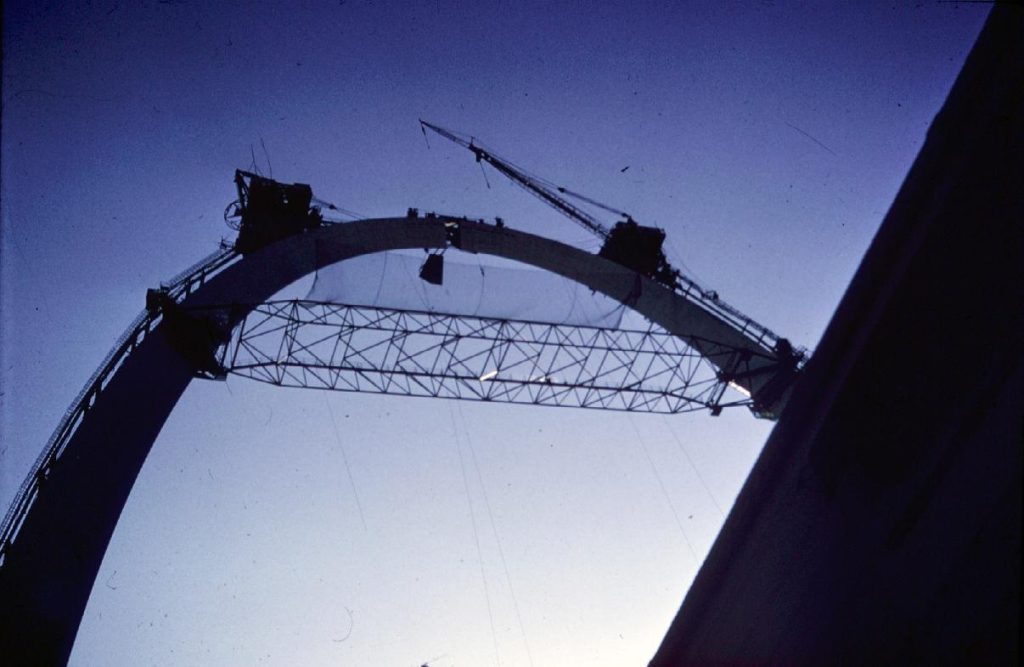A Lesson in Gateway Arch Architecture
The 56th anniversary of the completion of the Gateway Arch is October 28! To celebrate, we’re spotlighting some of the unique aspects of the monument, including the Gateway Arch’s architecture.
The Architect
Designed by Finnish-American architect Eero Saarinen, the Arch is an inverted catenary curve, the shape made when holding a chain at both ends. Saarinen set out to emulate the geometric shapes of the existing monuments to Washington, Lincoln and Jefferson in Washington, DC. He decided an arch was the best representation of a gateway for the “Gateway to the West.”
The Construction
At 630 feet, the Arch is as tall as it is wide – an optical illusion to most! Each leg of the Arch consists of double-walled, steel equilateral triangles, which are stacked one on top of the other and welded together. The complex engineering design and construction is completely hidden from view; all that can be seen from the outside is the Arch’s stainless steel outer skin.
The Topping Out
On October 28, 1965, the day the Arch was topped out, construction workers used heavy jacks to force the legs to 8.5 feet apart (they had rested only 2.5 feet apart) to fit the 8-foot-wide keystone.
Learn more about the construction of the Gateway Arch in this look back from Johannes E.M. Jensen, associate director of the National Park Service in the 1960s. To stump your friends on Gateway Arch trivia, head over to our FAQ page.

